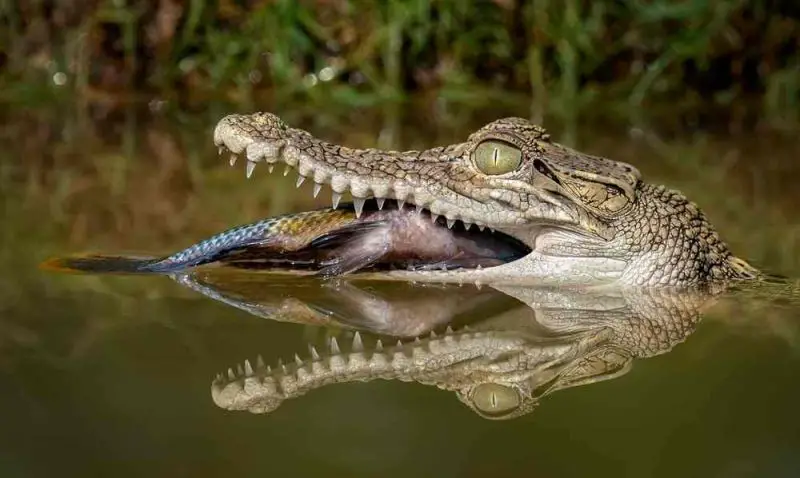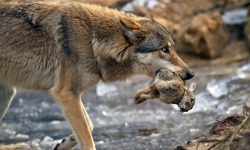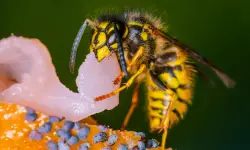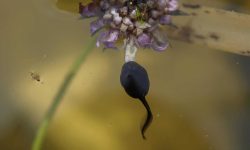Alligators are some of the most powerful and ancient predators on Earth. With roots tracing back over 200 million years, these reptiles have perfected the art of survival through an incredibly diverse diet. From swamps to rivers, they dominate freshwater ecosystems as apex predators.
As opportunistic carnivores, alligators will eat almost anything they can catch — whether it swims, flies, or walks. Their menu changes with age and environment, ranging from fish and amphibians to mammals and even fruit.
Understanding what alligators eat provides insight into their adaptability and their crucial role in balancing wetland ecosystems. Let’s dive into what fuels these ancient hunters and explore the 20 foods alligators love the most.
Understanding the Alligator Diet

The Carnivorous Nature of Alligators
Alligators are strict carnivores for most of their lives. Their diet consists mainly of meat, but they also consume carrion and occasionally fruit for hydration. Their sharp teeth and powerful jaws allow them to crush bones, shells, and even turtle carapaces with ease.
Young alligators start by feeding on insects, crustaceans, and small fish. As they grow, their prey size increases dramatically, and adults can take down animals as large as deer or wild boar.
This transition from small to large prey shows how their diet evolves to match their growing strength and dominance in their habitat.
Hunting and Feeding Behavior
Alligators are stealthy ambush predators. They rely on patience and precision rather than speed, often waiting motionless beneath the water’s surface until prey comes close enough to strike. Their muscular tails propel them forward with explosive force.
They use the “death roll” — a spinning motion — to tear apart larger prey before swallowing it. Smaller prey, however, is swallowed whole. Alligators rarely chew; instead, their digestive system breaks down even bones and shells.
Their ability to hunt both in water and on land makes them versatile predators capable of surviving in changing environments.
Seasonal and Environmental Adaptations
Alligator diets vary with the seasons. In warmer months, they are highly active hunters, consuming fish, amphibians, and mammals. During winter, their metabolism slows, and they eat less, sometimes surviving for weeks without food.
Environmental conditions, such as drought or flooding, also influence their feeding habits. When water levels drop, alligators may feed on stranded fish and animals, showcasing their opportunistic nature.
20 Foods Alligators Love the Most
1. Fish
Fish are the foundation of an alligator’s diet and remain their most consistent source of nourishment. Species like catfish, bass, and gar thrive in the same swampy and river habitats that alligators dominate. These fish provide lean protein and hydration, fueling both energy and muscle strength.
Alligators use stealth and patience when hunting underwater. They position themselves just below the surface, blending perfectly with their surroundings until an unsuspecting fish swims too close. With a lightning-fast snap of their jaws, the alligator captures its prey in an instant.
This form of hunting teaches precision to younger alligators, helping them master control and timing before progressing to larger and more dangerous targets.
2. Turtles
Turtles are one of the most prized meals for alligators, and few predators can match their ability to break through a turtle’s armored shell. With a jaw force that exceeds 2,000 pounds per square inch, an adult alligator can easily crush even the thickest carapace.
They consume both aquatic and semi-aquatic turtles, swallowing smaller ones whole and tearing larger ones apart piece by piece. The rich, fatty meat of turtles provides essential nutrients, sustaining the alligator through periods of low prey availability.
This feeding behavior showcases the alligator’s unmatched power and adaptability — no prey, not even those protected by armor, is beyond their reach.
3. Birds
Alligators often feast on wading birds such as herons, egrets, ibises, and ducks that inhabit wetlands. They wait patiently near shallow water or under overhanging branches, striking the moment a bird lands or dips its beak to drink.
Juvenile birds and chicks are especially vulnerable during nesting season, becoming easy targets when they first learn to fly. With a quick burst of speed, the alligator lunges upward, pulling its prey beneath the surface before it has a chance to escape.
By preying on waterfowl, alligators maintain balance in wetland ecosystems, ensuring that bird populations remain healthy and sustainable.
4. Frogs
Frogs and toads are staples in the diet of young alligators. These amphibians are abundant, soft-bodied, and easy to catch — perfect for developing hunters. Frogs thrive near the same wet habitats, making them a readily available meal.
Alligators stalk frogs at the water’s edge or on floating vegetation, using quick jaw movements to snatch them before they leap away. Their diet often includes both adults and tadpoles, offering hydration and protein in one.
This early diet helps young alligators strengthen their muscles, hone coordination, and prepare for the challenges of hunting larger prey as they mature.
5. Snakes
Snakes make up a smaller but fascinating part of an alligator’s diet. Whether it’s a harmless water snake or a venomous cottonmouth, alligators rarely hesitate to strike. Their thick skin and fast reflexes make them nearly immune to snake bites.
They ambush snakes near the waterline, snapping them mid-slither or pulling them from reeds. Once caught, the alligator crushes the snake and swallows it whole.
These meals provide valuable fats and proteins while demonstrating the alligator’s dominance over nearly every other predator in its environment.
6. Crustaceans
Crabs, crawfish, and shrimp form an essential part of a juvenile alligator’s diet, especially in coastal marshes and brackish estuaries. Their shells are soft enough for developing jaws but firm enough to help strengthen them with each bite.
Alligators root through mud or shallow pools to uncover crustaceans, often using their sensitive snouts to detect movement. Once captured, they crack the shell with ease and swallow the contents whole.
Crustaceans are loaded with minerals like calcium and phosphorus, supporting skeletal development and overall growth in young alligators.
7. Small Mammals
Raccoons, muskrats, opossums, and nutria are prime prey for adult alligators. These mammals often approach the water to drink or feed, unaware of the danger lurking just below the surface.
Alligators wait motionless, then explode upward with astonishing power, seizing their prey and dragging it into the water to drown it. This stealth-hunting technique rarely fails once the target is within striking distance.
The protein-rich meat of mammals fuels muscle maintenance and energy storage, especially during breeding or territorial defense seasons.
8. Deer
Large alligators have been known to take down full-grown deer — a remarkable feat of power and timing. They typically attack when the animal comes to drink, pulling it beneath the surface with a crushing grip.
A single deer provides days’ worth of nourishment, allowing the alligator to feed, rest, and return later to the remaining carcass. They often store excess meat underwater, where it remains preserved and hidden from scavengers.
This ability to plan and store food highlights the intelligence and adaptability of these prehistoric predators.
9. Wild Boar
Wild boars are strong, aggressive animals, yet they often fall victim to alligators in regions like Florida and Louisiana. The alligator uses the element of surprise, striking when the boar wades too close to the shoreline.
Their massive jaws crush the boar’s bones instantly, ensuring a quick and decisive kill. The meal is high in fat and energy, sustaining the alligator for long periods.
By preying on wild boar, alligators also help control invasive populations, benefiting local ecosystems.
10. Waterfowl Eggs
Eggs are an easy, nutritious treat for alligators, particularly those of ducks, geese, and herons. These reptiles gently roll the eggs into their mouths using their snouts before cracking them open.
Eggs provide concentrated protein, fats, and calcium — nutrients that support metabolism and energy balance.
During nesting season, when other prey may be limited, egg consumption becomes a convenient supplement for opportunistic hunters.
11. Carrion
Alligators never waste a meal, and carrion is often a valuable part of their diet. They feed on dead animals found floating in the water or stranded along riverbanks.
Their digestive system is powerful enough to process rotting flesh and even bones, allowing them to extract nutrients from carcasses that most animals avoid.
Scavenging helps them conserve energy during cold weather and plays an ecological role by preventing disease spread and cleaning up natural environments.
12. Snapping Turtles
Even aggressive snapping turtles occasionally become prey for large alligators. Once captured, the alligator uses its immense bite force to crush the shell completely.
These turtles offer rich meat and fat reserves that provide energy before the cooler months when food becomes scarce.
This predator-prey relationship emphasizes the alligator’s dominance in aquatic food chains — no creature, not even another armored predator, is safe.
13. Birds of Prey (Occasionally)
While uncommon, alligators have been known to take down birds of prey such as ospreys or vultures. These attacks usually occur when the birds swoop low over water to drink or grab fish.
A well-timed leap allows the alligator to snatch the bird mid-air or at the water’s surface, pulling it under in seconds.
Such rare but spectacular hunts highlight the alligator’s explosive power and opportunistic nature as a top-tier predator.
14. Fish Carrion and Remnants
In addition to hunting live fish, alligators readily consume leftovers and remains. Fish carcasses left by fishermen or washed ashore become effortless meals.
Their stomach acids easily digest partially decayed meat, ensuring no nutrients go to waste.
This scavenging behavior reflects the alligator’s efficiency and adaptability in ecosystems where food availability changes with the seasons.
15. Snails
In marshy environments, alligators occasionally feed on large aquatic snails. Their crushing jaws make quick work of the shells, allowing access to the soft, mineral-rich meat inside.
Snails offer calcium that strengthens the alligator’s bones and teeth, particularly beneficial for juveniles still developing skeletal structure.
These small yet nutrient-dense meals showcase the alligator’s ability to exploit even minor food sources when larger prey is unavailable.
16. Birds’ Chicks
During breeding seasons, chicks that tumble from nests or wander too close to the water often become an easy snack. Alligators lurk below trees or reeds where colonies gather, striking instantly when opportunity arises.
The young birds provide soft, protein-packed meat that is easy to digest.
This opportunistic feeding helps sustain alligators between larger hunts and underlines their efficiency as adaptable predators.
17. Insects
Juvenile alligators rely heavily on insects in their early stages of life. They feed on beetles, dragonflies, and water bugs that swarm around ponds and marshes.
Catching insects helps them refine coordination and timing, essential skills for future hunting success.
These protein-rich insects support growth and hydration until the young reptiles are strong enough to transition to fish and amphibians.
18. Other Alligators (Cannibalism)
Cannibalism occurs among alligators, particularly during times of food scarcity or territorial disputes. Larger males may consume smaller rivals or hatchlings.
This brutal act not only provides nourishment but also reduces competition within crowded wetlands.
Though harsh, such behavior ensures that the strongest individuals survive, maintaining the health and balance of the species.
19. Fruit (Occasionally)
Though alligators are carnivorous, they sometimes consume fallen fruits like berries or citrus in the wild. These occasional snacks help with hydration and digestion.
Fruits contain natural sugars that provide quick energy, especially during hot seasons when meat prey is harder to find.
This surprising dietary flexibility reveals that even apex predators can take advantage of plant-based food when necessary.
20. Domestic Animals (Rarely)
In rural or suburban regions near lakes and ponds, alligators occasionally prey on small pets or livestock that stray too close to the water.
Such incidents are rare and usually occur when wild prey is scarce or humans encroach on natural habitats.
Public education and responsible management are essential to preventing these encounters, allowing both humans and alligators to coexist safely.
FAQs About Alligator Diets
What do alligators eat the most?
Fish and turtles make up the majority of an alligator’s diet, followed by small mammals and birds.
Do alligators eat humans?
Alligator attacks on humans are extremely rare and usually result from provocation or mistaken identity.
How often do alligators eat?
Adult alligators may eat once or twice a week, while juveniles feed more frequently due to faster metabolism.
Do alligators chew their food?
No. They swallow prey whole or tear it into chunks using their powerful jaws and death roll.
Can alligators eat fruit?
Occasionally, yes. Some studies show alligators eating wild fruits for hydration and digestion.
Do alligators hunt at night?
Yes. They are primarily nocturnal hunters, using their excellent night vision and stealth to ambush prey.
What do baby alligators eat?
They feed on insects, small fish, crustaceans, and amphibians until they grow strong enough to tackle larger prey.
Do alligators scavenge?
Absolutely. Alligators frequently eat carrion, helping clean up ecosystems by removing dead animals.
What do alligators drink?
They drink fresh water but obtain much of their hydration through the fluids in their prey.
How much can an alligator eat at once?
An adult can consume up to 20% of its body weight in one feeding, then fast for several days.
Final Thoughts
Alligators are ancient survivors whose diet reflects power, patience, and adaptability. From fish and turtles to deer and wild boar, they eat whatever nature provides, maintaining balance in freshwater ecosystems.
Their feeding habits reveal both the brutality and the beauty of nature — a perfect example of evolution’s precision.
Understanding what alligators eat not only deepens our respect for these remarkable reptiles but also underscores their vital role in keeping wetland environments thriving and balanced.






